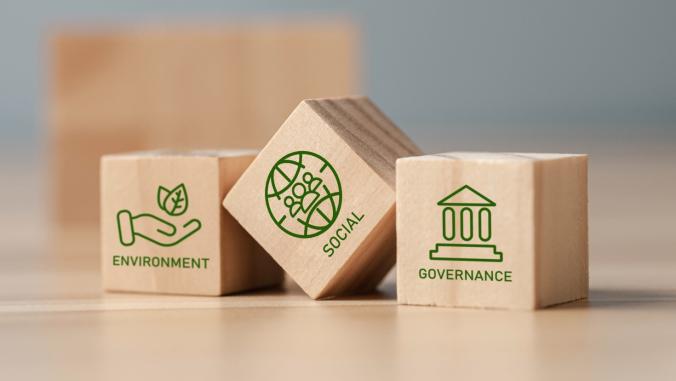State of Green Business: conservation investing's stock rises
Long a niche component of impact investing portfolios, conservation is coming into its own as a viable financial bet.

This article is part of a series of excerpts from the 2015 State of Green Business report.
The idea that investing “for good” can garner environmental and social benefits alongside financial ones has deep historical roots in partnerships among investors, foundations and the U.S. government over several decades.
But the concept has taken on new dimensions in recent years, providing much-needed capital to address the world’s biggest environmental conservation challenges.
Conservation investing represents a subset of “impact investing” — capital invested in companies, organizations and funds with the intention to generate measurable social and environmental impact alongside a financial return. (Social investing, impact investing’s other principal category, focuses on people by supporting such programs as childhood education and preventive health care services.)
Conservation investing finances initiatives such as those aimed at promoting sustainable food production and water quality. Although social investing has received the most investor attention (and money), the pendulum may be about to swing.
An estimated $300 billion is needed each year to meet the world’s environmental conservation challenges, according to the Global Canopy Programme. However, current levels of investment — coming primarily from governments, multilateral agencies and philanthropy — total only around $50 billion.
Private capital meets conservation
With many of the world’s developed economies enacting economic austerity measures, it may be up to the private sector to bridge the gap.
The market to date has been pretty small. Conservation impact investing totaled $23 billion from 2009 to 2013 and is expected to increase to $37 billion over the next five years, according to a report released late last year by The Nature Conservancy’s NatureVest division and EKO Asset Management.
Launched earlier in 2014 with support from JPMorgan Chase, NatureVest plans to deploy $1 billion in impact capital for conservation over the next three years by convening investors, creating innovative financial transactions and building an investment pipeline across multiple sectors.
The capital committed to conservation impact investments from 2009 to 2013 was invested in three main categories:
- Water quantity and quality conservation: Investments in watershed protection, water conservation and stormwater management, as well as trading in credits related to watershed management accounted for a majority of direct finance institutions (DFI) investments ($15.4 billion). Only 11 percent of private investment ($209 million) went to these types of projects.
- Sustainable food and fiber production: Investments in sustainable agriculture, timber production, aquaculture and wild-caught fisheries made up roughly $3 billion of DFI investments. However, this accounted for a two-thirds of private conservation investment ($1.2 billion).
- Habitat conservation: DFIs invested close to $3 billion to protect shorelines and reduce coastal erosion, projects to Reduce Emissions from Deforestation and Degradation (REDD+), and provde for land easements and mitigation banking. Twenty-three percent of private investment ($43.7 million) went towards these priorities. One growing segment of conservation investing is “green bonds.”
Risk and reward
These segments offer investors comparable risk to mainstream bonds, along with the opportunity to help finance green projects aimed at addressing environmental challenges, such as clean air and water, or advancing environmental solutions, such as climate resilience and energy efficiency.
Similar to conventional bonds, the issuing entity guarantees to repay the Green Bond over a set period of time, plus either a fixed or variable rate of return. Over $40 billion in Green Bonds were issued in 2014, expected to grow to $100 billion in 2015, according to the Climate Bonds Initiative.
Such growth notwithstanding, impact investors note a shortage of investable projects and opportunities with appropriate risk-return expectations.
For starters, investors bemoan a lack of standardized metrics, stymying the growth of viable projects. Government policy can help. Moves such as putting a price on a broader range of ecosystem services, can reduce uncertainty about the future value of investments in ecosystem-services markets.
The world’s largest impact investors expected to increase capital committed to impact investments to $12.7 billion in 2014, up 19 percent from 2013, according to a 2014 survey (PDF) by J.P. Morgan and GIIN. Those surveyed, including fund managers, banks, foundations, development finance institutions and pension funds, collectively managed $46 billion in impact investments.
The report attributes the significant increase in capital to high satisfaction with both the financial returns and the social or environmental impacts of such investments. Investors also are encouraged by greater government support, new product and fund launches and widespread impact measurement.
More investors planned to increase the percentage of their portfolios invested in Sub-Saharan Africa, Asia and North America, relative to other regions.
Although microfinance long has been the darling of impact investing, the highest number of investors plan to decrease the percentage of their portfolios allocated to the field, relative to other sectors. Investors also plan to increase the percentage of their portfolios allocated to food and agriculture, healthcare and financial services (excluding microfinance).
Impact at scale
For impact investing to reach scale sufficient to bring private capital sufficient to address major environmental challenges will require a more intentional and proactive partnership between government and the private sector, according to the U.S. National Advisory Board on Impact Investing (NAB).
Although impact investments still represent a tiny 0.02 percent of the $210 trillion in global financial markets, many believe it could reach 10 or even 20 times its current size — still a pittance, but a significant one in terms of its potential impact.
Achieving that level of growth, said NAB, will require the removal of regulatory barriers that stand in the way, such as those governing foundation investments in for-profit enterprises.
Also needed, according to NAB, are new incentives to lure private capital.
For example, NAB would like to see government agencies replicate successful impact investing programs, such as the Community Development Finance Institution Fund, which marshals $20 of private capital for every $1 of government funds invested.
Although DFIs such as the International Finance Corporation and European Investment Bank account for a majority of investments ($21.5 billion), private investments comprise $1.9 billion of the $23 billion market — an amount growing at an average of 26 percent annually, which is expected to reach more than $5.6 billion by 2018. Private investors include fund managers, corporations, foundations, nonprofit organizations, family offices and representatives of high-net-worth individuals.
Opportunities for conservation impact investing also exist in the real estate sector through conservation banks, which sell credits in exchange for protecting habitats of endangered species. In exchange for permanently protecting the land and managing it for these species, the U.S. Fish and Wildlife Service approves a specified number of habitat or species credits that bank owners may sell.
Developers or other project proponents who need to compensate for the unavoidable adverse impacts their projects have on species may purchase the credits from conservation bank owners to mitigate their impacts.
Such mechanisms can provide the financial incentives needed to commit land to conservation, enhancement, restoration and habitat for species.
Conservation banks already protect nearly 25 endangered species and cover around 40,000 acres.
In California, which pioneered the concept, a landowner received $125,000 for protecting the habitat for a small bird called Least Bell’s Vireo. In Texas, a rancher sold credits for $5,000 per acre of Golden-cheeked warbler habitat.
That’s big money for such a small bird.





